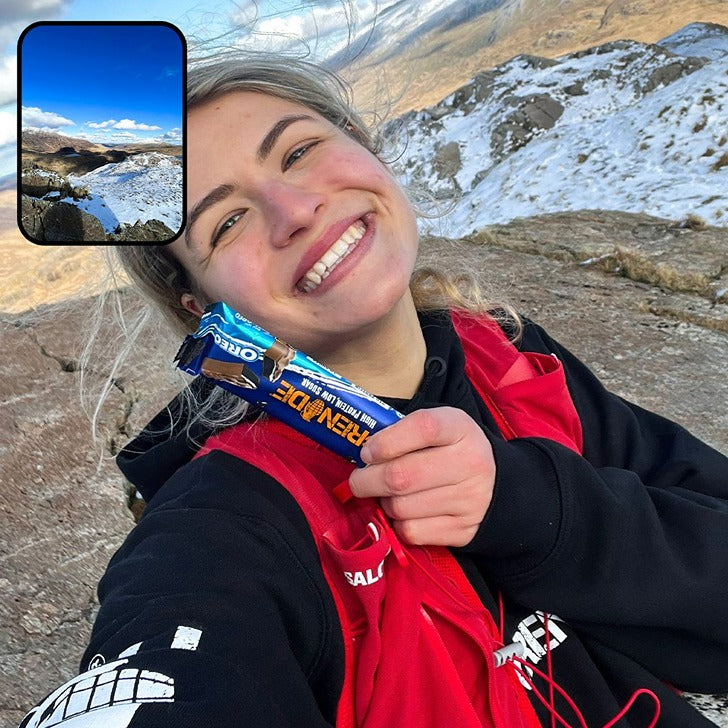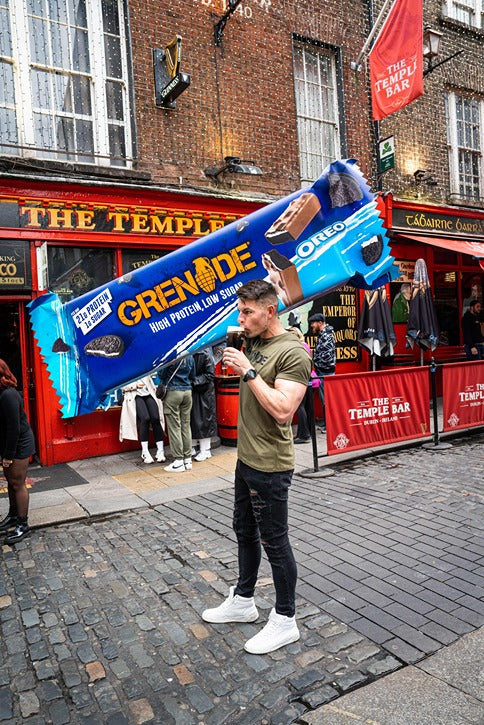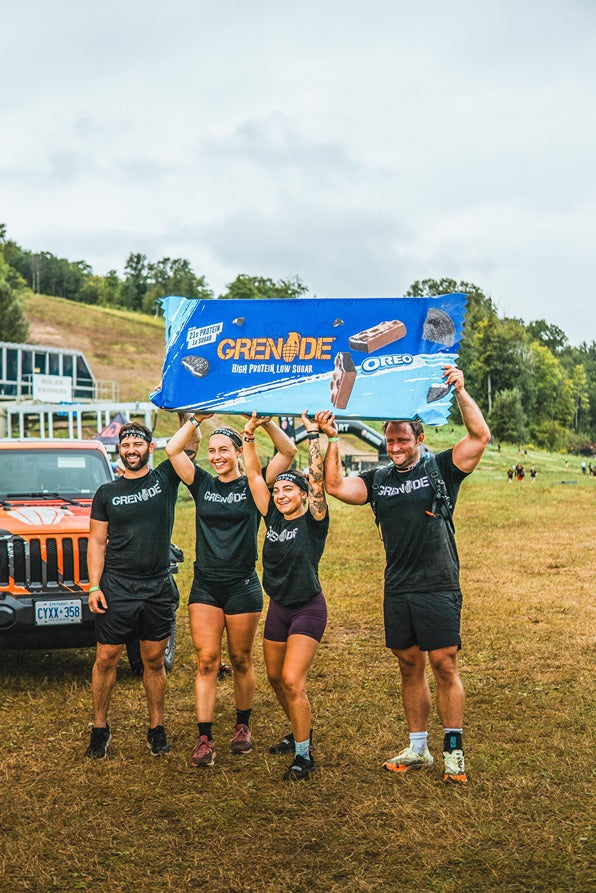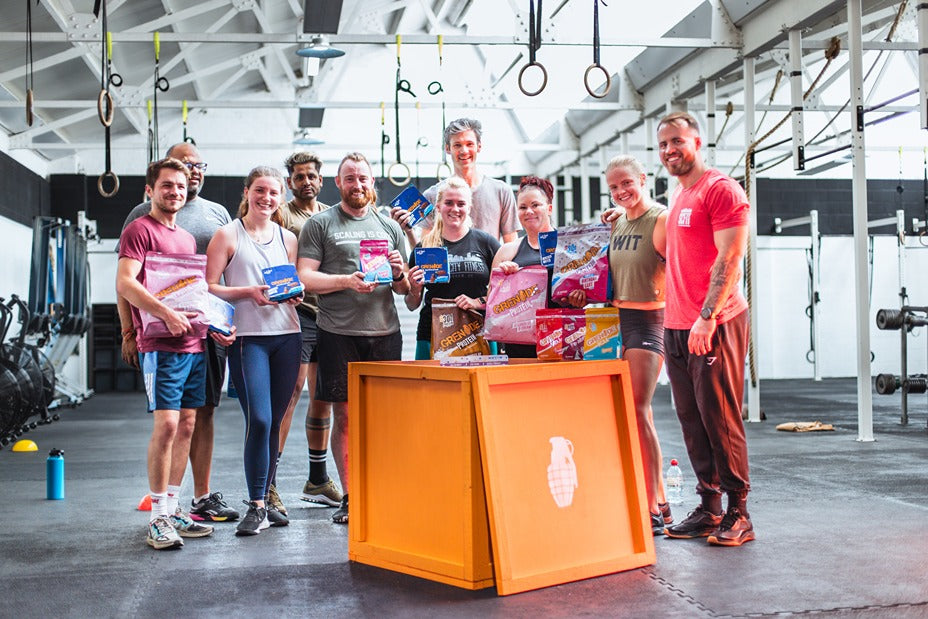training
Tips To Master 3 Tough Gym Lifts
Been feeling a lil rusty in the weights department? Us too. Our post-lockdown lifts are a thing of the past and perfecting that all important form is proving tougher than expected. But, fear not! We’re serving up our top tips to master these 3 tough gym exercises, including the dreaded deadlift, the front squat and weightlifting staple the clean and press.
DEADLIFT
Ah, the deadlift. If you’ve got a bit of a love-hate relationship with this compound exercise then, we can assure you, you’re not alone. When performed correctly, the deadlift offers countless benefits, from increased core strength and improved posture, to building strength in the legs and lower back. But, bad form can mean game over, with many reporting injuries to the back and strains in the wrist and finger flexors.
SO, HOW DO YOU DO A DEADLIFT?
1) First, stand with your feet shoulder width apart and flat to the floor
2) Bend over and grab the barbell with a shoulder-width grip
3) Then, bend your knees until your shins touch the bar
4) Lift your chest upwards and straighten the lower back, then lift upwards, standing up with the weight
5) Return the bar back to the ground, keeping the back straight and repeat
DEADLIFT TIPS
It’s all in the chest
So, you may not think your chest plays a part in perfecting that all important deadlift form but, trust us, it’s pretty important. Maintaining a strong spine is key and the best way to achieve this is to keep your chest up throughout, ensuring you don’t hunch your back or torso, as this can increase risk of injury.
A strong core is key
Again – another area you may not consider very important when deadlifting, but keeping your abs braced throughout the full movement will ensure your whole body is secure and stable and will help you keep your back straight.
Get a grip
A strong grip is so important when deadlifting, especially if you’re loading on the weight. And, how do you strengthen your grip, you ask? Well, experts recommend holding your deadlift longer at the top, putting additional pressure on your grip but, in turn, training it to hold out longer. If you’re struggling with grip, it’s also worth testing out different hand positioning; overhand grip is probably the most common, but a mixed grip (one hand over the bar, the other under the bar) may allow you to lift that little bit heavier, but be sure to swap your hands over each set to avoid any imbalances.

FRONT SQUAT
An Olympic Weightlifting staple, the front squat is no joke. You may be a pro when it comes to your everyday barbell back squat, but that doesn’t mean you’ll be able to perfect this tricky lift. When done correctly, front squats will activate those glutes, increase core strength and also increase the depth of movement. If you can nail the front squat, chances are you’ll see improvement in other lifts too, such as squat cleans.
HOW DO I PERFORM A FRONT SQUAT?
The front squat is a tough one to master – if you’re new to this exercise, we’d recommend perfecting your form first before adding weight. Try out the below with just a barbell and ensure your comfortable before introducing any weight.
1) Start by placing the barbell across the front of your shoulders, below the neck
2) Place your fingertips underneath the barbell, a little further apart than shoulder width
3) Keeping your chest strong and your core tight, slowly bend your knees and lower yourself towards the floor
4) When your thighs are parallel to the floor, hold and then slowly lift back up to upright position
FRONT SQUAT TIPS
Ease yourself in with goblet squats
Goblet squats, using a kettlebell or a dumbbell, are a great exercise to try before giving front squats a go. Goblet squats require a similar movement to front squats, so it’s a good idea to perfect this move before tackling the tougher front squat.
Strengthen that core
Just like deadlifts, front squats require a strong core so make sure you’re working those abs to ensure you’re able to perform this exercise effectively and safely. The plank is a good place to start – it may look easy, but this staple core exercise strengthens your stomach like no other!
Improve your thoracic mobility
Say what?! You may not have head of thoracic mobility but it’s super important if you’re set on smashing your front squats! Good thoracic mobility affects your chest and back strength, as well as improving your posture – essential if, like many of us, you’re sat hunched at a desk all day. Improvements can be made by incorporating a few simple stretches into your warm-up routine.

CLEAN AND PRESS
Don’t be fooled; this extremely effective exercise may seem as if it’s exclusive to Olympic weightlifters, but there’s nothing stopping you from adding this move into your routine. And, with the benefits it’ll offer your body, it may well be worth it! The clean and press works the arms, legs, back, shoulders and abs! There’s no denying it’s a hard move to master, but it’s all in the movement. Take the time to work on your form using just a barbell then, when you feel more comfortable, you can up the weight.
SO, HOW DO I PERFORM A CLEAN AND PRESS?
There’s a lot to consider with this exercise – your movement should be fluid and your back straight throughout:
1) First, squat down, keeping your back straight, and grab the barbell with an overhand grip
2) Lift the barbell to your shoulders and lower back down into a squat – this should all be in one swift movement, with your wrists flipping back so the barbell rests on the top of your palms
3) Then, push through your heels and extend your arms to press the barbell above your head
4) Slowly lower the barbell back down to your shoulders and drop it back to the floor, ensuring your back remains straight throughout.
CLEAN AND PRESS TIPS
Check your form
We mean literally. If possible, practice your form in a mirrored room or in front of one big mirror so you can check your form. Another great way to master form is to get a friend to video your efforts – this way, you can see any errors for yourself and correct accordingly.
Focus on your heels
When performing the clean and press, your weight should remain on your heels at all times, so if you find yourself shifting your weight forward during the movement, try to focus on putting weight onto your heels. Shifting weight forward could cause imbalances and injuries.
Grip is key
Like many compound exercises, your grip can make all the difference. Aim for a grip no more than 2 inches wider than your shoulders to ensure a smooth lift and to avoid any injury to your wrists and shoulder joints.
Want more on how to perfect those lifts? Head over to our blog to find out more about Olympic weightlifting from Grenade ambassador Pollyanna Isabella.






